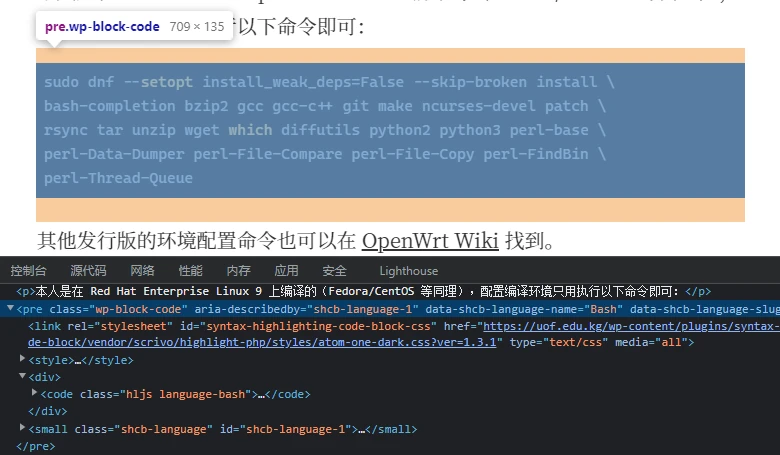注意 本文所述软件已在 GitHub 上以 MIT 协议开源,且比文章里解释的代码先进很多。由于软件后续更新等因素,不保证仓库内软件与本文所述代码同步。用户使用该软件引发的一切效应都与作者无关。
前言 由于搭建了自己的个人博客,需要把自己先前写的文字放到个人博客上,这就需要一个爬虫。
必要条件
你自己的 WordPress 博客站
Node.js
优秀的网络
灵巧的双手
聪明的大脑
环境准备 进入一个新文件夹,创建 Node 环境:
信息什么的随便写啦(index.js 了。
开始代码 准备依赖 引入 https 库以从网站获取网页:
1 2 const https=require ('node:https' );
引入 fs 库来写入文件:
1 2 const fs=require ("node:fs" );
引入 async 以控制流程(不然 js 默认的异步处理会导致不必要的麻烦):
1 const async =require ('async' );
引入 JSDOM 来实现浏览器式(你甚至都不用学 jQuery )的 HTML DOM 处理:
1 2 3 const jsdom=require ("jsdom" );const { JSDOM } = jsdom;
引入 webp-converter 以实现图像的自动 WebP 转换:
1 npm install webp-converter
1 2 const webp=require ('webp-converter' );
引入 turndown.js 以实现转换成 Markdown:
1 2 var TurndownService = require ('turndown' );var turndownService=new TurndownService ();
然后我还顺便引入了 colors-console 库以实现五彩斑斓的输出()
1 npm install colors-console
1 const color = require ('colors-console' );
让我们先写一个简单的日志函数罢:
1 2 3 4 function info (_info ){console .log (colors ("green" , "INFO" ), _info);return ;
获取参数 这里我们直接从命令行获取参数:
1 2 3 4 5 6 7 8 9 10 11 12 if (process.argv .length != 5 ){ console .log (colors ("red" ,"FATAL" ),"参数数目不规范!" );exit ();var args={ link : process.argv [2 ],filename : process.argv [3 ],imagePrefix : process.argv [4 ]
获取网页内容 使用 https.get() 或 http.get() 方法即可。
1 2 3 4 5 6 7 8 9 htmlString=new String ();get (args.link ,function (resource ){on ("data" , function (chunk ){on ("end" , function (startGenerating (htmlString, args);
主要入口函数 新建一个叫 startGenerating 的方法:
1 2 3 4 5 6 7 8 9 10 11 12 13 14 15 16 17 18 19 20 21 22 function startGenerating (html,argument ){info ("开始生成" );var srcs;async .series ([function (callback ){createDir (argument);callback (null ,"createdir" );function (callback ){loadDOM (html,argument);callback (null ,"loaddom" );function (callback ){processImages (srcs,argument);callback (null ,"downimage" );function (callback ){info ("生成完成!" );callback (null ,"done" );
async.series: async 库提供的顺序执行代码,接受的参数是一个函数数组。callback: callback(err,message);
创建文件夹 1 2 3 4 5 6 7 8 9 10 11 function createDir (argument ){try {fs.mkdirSync (`./output/${argument.imagePrefix} ` );}catch (err){if (err.code !="EEXIST" ){ console .error (err);console .log (colors ("red" , "FATAL" ), "出现错误" );exit (1 );console .log (colors ("yellow" , "WARN" ), `目录 ${argument.imagePrefix} 已存在` );
解析 HTML 新建一个叫 loadDOM 的方法:
1 2 3 function loadDOM (_html, argument ){
载入 DOM 1 2 const dom=new JSDOM (_html);var document =dom.window .document ;
获取文章主体元素 1 2 var div=document .querySelector ("div.entry-content" );info ("DOM 已载入" );
在这里使用 document.querySelector 这样的浏览器式代码是得益于 JSDOM 。
在 WordPress 中,至少在 University of Fool 使用的 Vilva 主题中,文章主体元素就是 ``
获取文章图像列表 1 2 3 4 5 var srcs=new Array ();querySelectorAll ('img' ).forEach (function (node,n ){src ;src =(`/img/${argument.imagePrefix} /${argument.imagePrefix} -${n} .webp` );
parentNode.querySelectorAll(selector): 从该元素的所有子元素里选择与 selector 匹配的元素,返回值的类型是 NodeListNodeList.forEach: DOM 模仿 JavaScript 自带的 Array 类型的 forEach 方法,用法是一样的node.src: `` 等元素的 src 属性值此处 srcs 数组是为了下载图片并转换做准备。
去除所有的样式表 1 2 3 div.querySelectorAll ('style' ).forEach (function (node ){outerHTML =null ;
Node.outerHTML: 这个节点本身的 HTML 代码
去除标题外层的 <span> 我们看一看源代码,可以看见标题外面有两个 <span>:
1 2 3 4 div.querySelectorAll ('h1, h2, h3, h4, h5, h6' ).forEach (function (node ){var headingText=node.textContent ;innerHTML =headingText;
Node.textContent: 返回节点内所有 HTML 标签的内容,不含 HTML 标签本身。
去除代码块的多余内容 我们再看一看源码:
1 2 3 4 div.querySelectorAll ('pre' ).forEach (function (node ){var codeText=node.querySelector ('code' ).textContent ;outerHTML =`<pre><code>${codeText} \n</code></pre>` ;
去除空行 1 2 3 4 5 6 var html=new String ();innerHTML .split ('\n' ).forEach (function (line ){if (line!=new String ()){`${line} \n` ;
转换成 Markdown 1 2 var output=turndownService.turndown (html);info ("文件已改写" );
写入文件 1 2 3 4 5 6 try {fs.writeFileSync (`./output/${argument.filename} ` , output, 'utf8' );}catch (err){console .error (err);console .log (colors ("red" , "FATAL" ), "出现错误" );exit (1 );
结束函数 1 2 info (`${fileType} 文件已写入` );return srcs;
处理图片 -> 入口函数 为了防止异步执行和简化代码结构,我把入口函数单独分了出来:
1 2 3 4 5 6 function processImages (srcs,argument ){info (`开始下载和转换图片,总计 ${srcs.length.toString()} 个` );forEach (function (value,key ){processSingleImage (value, key, argument);
处理单张图片 入口函数 新建函数 processSingleImage:
1 2 3 function processSingleImage (source, n, argument ){
下载图片 1 2 3 4 5 6 7 8 9 10 11 12 13 14 15 16 17 18 19 info (`正在下载图片 ${n+1 } ` );get (source, function (response ) {var data=new String (); setEncoding ("binary" ); on ("data" , function (chunk ) {on ("end" ,function (writeFileSync (('./cache/' + n.toString () + '.png' ), data, 'binary' , err =>if (err) {console .error (err);console .log (colors ("red" , "FATAL" ), "出现错误" );exit (1 );info (`图片 ${n+1 } 下载完成` );
转换成 WebP 1 2 3 4 5 6 7 8 9 10 11 try {cwebp (`./cache/${n} .png` , `./output/${argument.imagePrefix} /${argument.imagePrefix} -${n} .webp` , "-q 70 -alpha_q 50" );catch (err){console .error (err);console .log (colors ("red" , "FATAL" ), "出现错误" );exit (1 );finally {info (`图片 ${n+1 } 转换完成` );
webp.cwebp(source, output, argument): source 是需要转换成 WebP 的文件路径, output 是输出的文件路径, argument 是传递给 Google cwebp 命令行工具的额外参数try-catch-finally: 先运行 try ,如果出现错误就运行 catch(我们在 catch 内退出了程序),最后运行 finally。
开始爬取 写好之后 记得保存!记得保存!记得保存! ,运行我们写好的代码:
1 node index.js <网页地址> <输出文件> <图像前缀>
然后,你应该能在 output/ 里看到生成的文件
后记 这篇文章只是记下了我写 html2blog.js 时的思路,而且算是最初版和最新版的糅合(?),因此不保证使用。GitHub 项目 。

